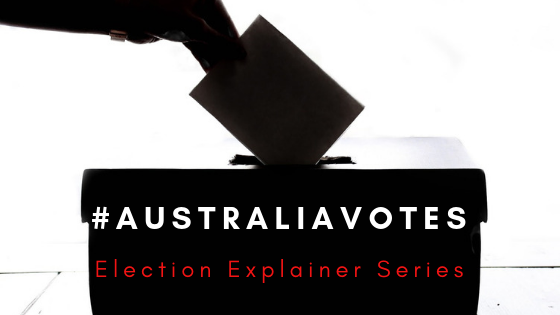In the past month, you have been inundated with election news, with things like policies, budgets and smear campaigns plastered all over your screens.
There is a reason why people find politics boring. Let`s break it down and make it as easy as possible. When you finish this article you will have a better understanding of what happens in Canberra.
So, let’s start at the beginning. The first thing you need to know about the Australian Parliament is that it’s made up of three key elements: The Queen (who is represented by the Governor-General), the Senate, and the House of Representatives.
The Governor-General
There is a two-step process to appointing a Governor-General. First, the prime minister will recommend his (or her) ideal candidate. After this, the Queen will appoint him (or her) to the role. The current Governor-General is retired Australian Army Officer, Peter Cosgrove.
The role of the Governor-General is to open a new federal Parliament, appoint times for sessions of Parliament and administering the oath of office to the prime minister, ministers, judges and other officials.
What is administering of the oath you might ask? It is swearing allegiance to the Queen. On most occasions, the politician will hold a bible.
The Governor-General will have played an important role in the upcoming election. Prime Minister Scott Morrison would have met Cosgrove to discuss the date of the election and give his approval.
He does have a role in passing bills, but we will get to that later.
House of Representatives
There are two parts of the House, the lower and upper. The House of Representatives is the lower house. The Federal Government is formed by the House of Representatives.
There are 150 electorates, and in each electorate, there is one member. Each electorate will have around 150,000 people, in which 100,000 will be of voting age.
On each election day, you will vote for the candidate you want to represent your electorate. An election is held every three years.
The candidate who receives 50 percent of first preferences will win the seat (the seat is another term for electorate). If no candidate wins 50 percent of the vote, it gets more complicated. The next preferences of the voters that voted for the least popular candidates are distributed until one candidate has the majority.
The Coalition or the Labor Party will need to win 76 electorates to form a majority government.
You will hear the term Coalition a lot over the next month. The Coalition is formed by the Liberal and National Parties.
The role of the House of the Representatives is making and changing federal laws as well as discussing matters that impact their electorate. Discussing matters is done during Question Time.
The Federal Government and opposition question each other on policies and decisions. It will last one hour on each sitting day. A sitting day is when all members of Parliament are in Canberra.
The House of Representatives sat for 64 days in 2018. When the members are not in Canberra, they will be in their own electorates.
During each Question Time, the Speaker of the House of the Representatives will officiate it.
The Speaker of the House is Member of Casey, Tony Smith. After every election, members of the House will elect a new Speaker. The Speaker is a member who has years of parliamentary experience.
When the Speaker is not in the House, their roles includes budgeting, staffing and allocation of offices for the members of the House of Representatives. They will represent the House when dealing with the Senate, the Governor-General and foreign heads of state.
The senators
The upper house of Parliament is the Senate. Like the lower house, senators are elected. There are 76 senators. In each state of Australia, there are 12 senators and two in each territory.
For the senators who represent a state, their term is six years, and half the senators will be elected every three years. In the two territories, the term will last three years.
Unlike the House of the Representatives, there are no electorates in the Senate. Senators are elected by proportional representation.
Proportional representation is when candidates are elected to the Senate in proportion to the number of votes they receive.
At the 2016 election in Queensland, 250,000 people voted for One Nation, which is nine percent of the vote. The Party was awarded two seats. The first seat was given to Pauline Hanson as she won 21,000 first preference votes. Malcolm Roberts was second on the One Nation ticket, so he was awarded the second Senate seat.
The Senate has constitutional powers that are nearly as equal of the House of Representatives. The Senate is the second most powerful upper house in the world.
The senators’ roles are to check on the Government, scrutinise bills and examine Government administration and policy.
How are bills passed in parliament?
Most bills are initiated in the House of Representatives as most ministers are part of the lower house. But senators can initiate them, apart from money bills.
Firstly, the bill is drafted. It is then sent to the House of Representatives where the bill is presented. The first reading is when the bill is introduced to the Parliament. During the second reading, the bill is debated. It is considered and amendments may be made. Then there is a third reading, where the bill is sent to the Senate and the same process is completed.
If the Opposition has enough support in the Senate, it can reject, amend bills or undertake activities that do not have the support of the Government. The amendments must be agreed on by both houses. The bill is then sent to the Governor-General where he (or she) gives his (or her) royal assent (approval). The bill is then put into law.
Josie Douglass is a third year Bachelor of Media and Communications (journalism) student at La Trobe University. You can follow her on Twitter @JosieDouglass.
Image from pexels.com.







